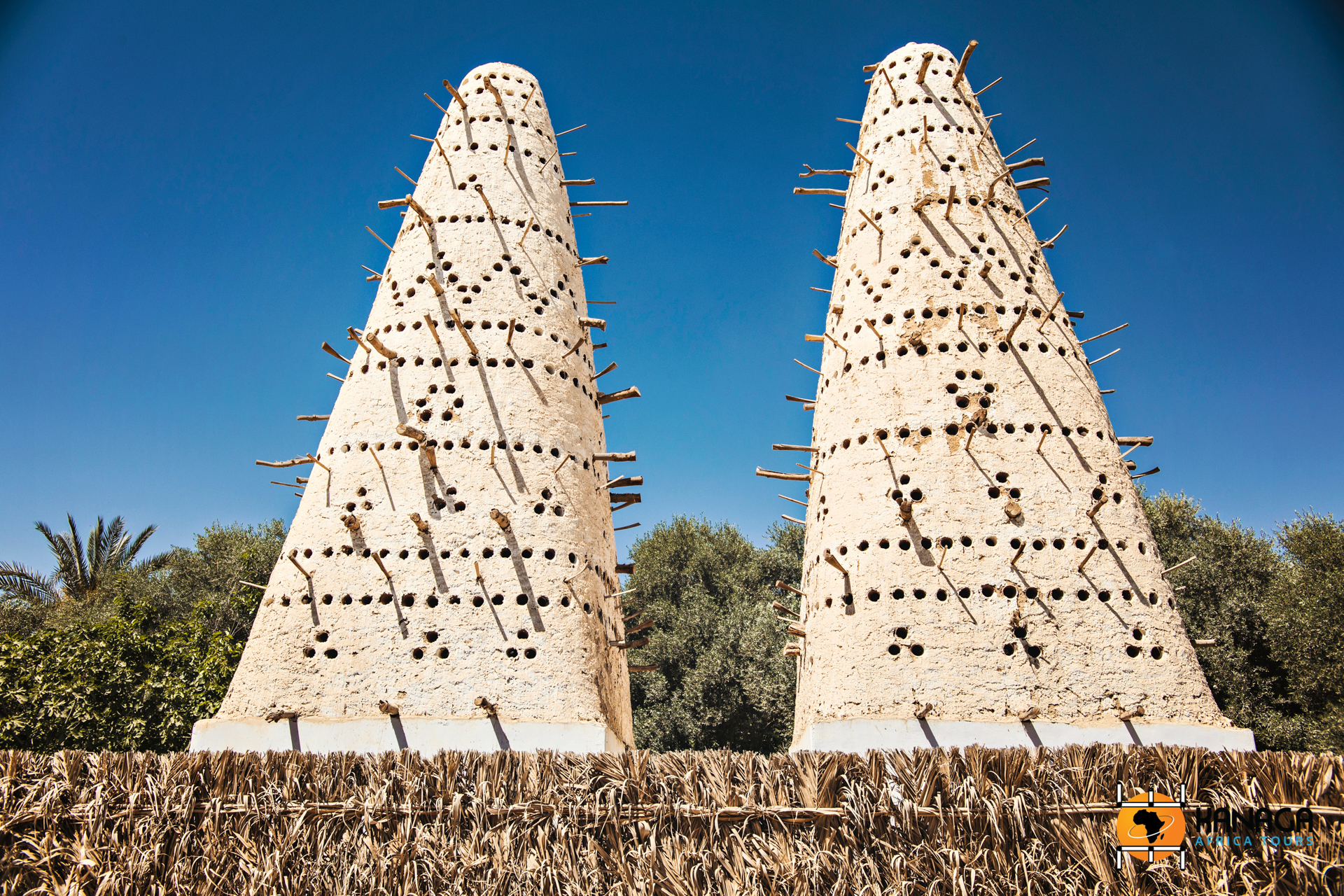Improperly called an oasis, the Fayoum Region opens onto a vast depression, fertile and luxuriant, south of the Jebel Qatrani, irrigated by the waters of the Nile, which were diverted in ancient times in the stream of the Bahr Yussuf (Joseph’s Canal), itself divided into a labyrinth of secondary canals, which capillarily irrigate one of the most productive lands in Egypt.
Embellished by the natural lake of Qarun and two artificial basins, called Upper and Lower lakes, rich in fish and connected by a small waterfall (the only one in the whole of Egypt), it was from the Middle Kingdom that Fayoum became an important centre of power and agricultural production, under the protection of the cult of Sobek, a crocodile deity particularly venerated in the region and whose eggs were protected inside the temples, so much so that in Greek times its capital, near what is now Medinet el-Fayum, was called Crocodilopolis.
From the pyramid of Sesostri II at El-Lahun to Amenemhat III at Hawara, from the Temple of Medinet Madi with its avenue of sphinxes, dedicated to the pharaoh himself, to the Temple of Sobek at Qasr Qarun, passing by the ruins of the ancient Ptolemaic city of Karanis and without forgetting the beautiful and famous Roman portraits discovered in the necropolis of Hawara, which realistically reproduce the faces of the dead on cedar tablets, in Fayoum the archaeological evidence is numerous and scattered throughout the region. But the history of this land goes back much further, when the sea that covered the depression began to recede. To the west of the fertile valley lies the vast Wadi el-Rayan, a protected desert area of extraordinary geological interest. The Eocene nummulitic deposits and fossil deposits of Wadi el-Hitan, known as the “Valley of the Whales”, testify to eras dating back 40 million years, when the waters that covered the region were inhabited by large Basilosaurus, ancestors of today’s whales, or when the Jebel Qatrani was covered by forests of which enormous petrified trunks remain. Today, the Wadi el-Hitan, a UNESCO World Heritage Site, is a huge open-air museum, dotted with hundreds of monumentally large and perfectly preserved skeletons, the most precious of which are protected in a special museum.
Fayoum is an unmissable destination not only for its rich archaeological and geological attractions, but also for its cultural and scenic riches. From the idyllic scenery bordered by date palms, opening up in the labyrinth of canals and wells, characterised by the typical wooden water wheels called “norie“, to the placid daily work of the farmers who work the fertile land of rice, sunflowers, wheat, vegetables and fruit. Fish and bird paradises of coots, herons and ibises, but also wild and desert lands, bordered by barkane dunes and populated by fennecs, gazelles and gerbils wandering through endless expanses of sand, from which springs suddenly appear. And the traditions of a people, their daily routine revolving around fishing, livestock breeding and agriculture, the symbol of which are the characteristic Fayoumite pigeon houses, splendid architectures in decorated clay, like mystical minarets, in which guano is produced, an excellent fertiliser for crops. Not to be missed is the small Tunis village, overlooking the saline waters of Lake Qarun, amidst jubilant pink flamingos, gardens and palm groves, the cultural and craft centre of the region, with its cheerful painted houses and potters at work, producing splendid terracotta and ceramic artefacts and typical wicker baskets. One of the most relaxing and characteristic places in the Fayoum.







